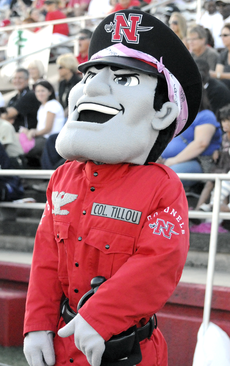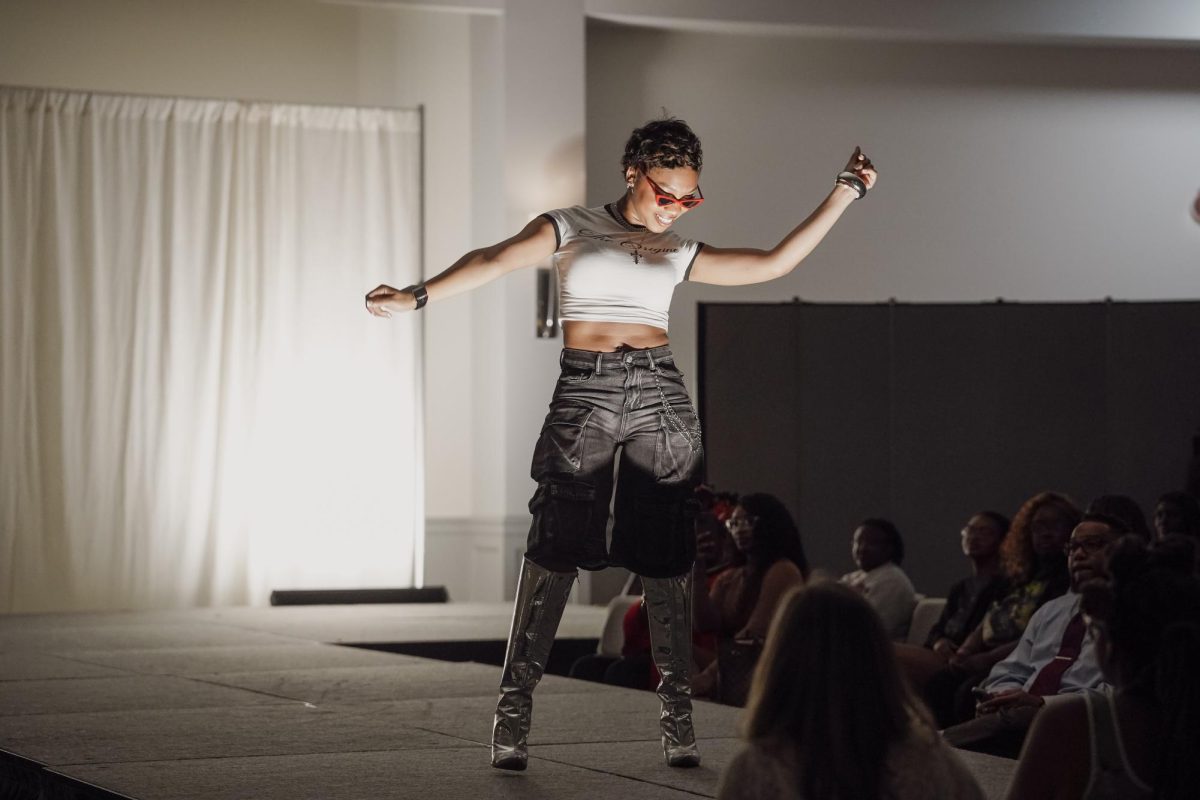He is a towering figure with an intimidating physique. His face is fixed in a permanent sneer. He has been loved by some, hated by others, but recognized by all who have a connection to Nicholls State University. He is indeed intimidating, and he is not even alive. He is Colonel Tillou, the Nicholls mascot. The tale of the Nicholls mascot spans more than 60 years, rooted in the beginning of Francis T. Nicholls Junior College of Louisiana State University.
Even though Nicholls began as a small college, the desire to have its own traditions and personality was always present in its students from the beginning. This can be seen in the creation of the college’s first football team.
Before the University was given the nickname, “the Colonels,” it put together a football team called “the Buccaneers,” which only lasted one season. This was not a total failure, however; it was proof that Nicholls was beginning to create a persona of its own. This was one of the first steps in the history of the Colonel mascot.
According to “Nicholls State University: The Elkins-Galliano Years” by Alfred N. Delahaye, it was in this very same year that the Student Government Association chose red and gray as the college’s colors and the Colonels as the official nickname. Delahaye wrote that the majority of students wanted the color red in an effort to distance themselves from the purple, gold and green of LSU and Tulane. He also wrote that the nickname represented Nicholls as an ROTC institution in which “Colonel” was the top rank.
“Muriel Rogan, assistant to the librarian, may have unwittingly played a role in the choice, for she frequently contributed to The Nicholls Worth a panel cartoon featuring a boyish character in uniform known as Colonel Nick,” Delahaye wrote.
These instances of Colonel Nick appeared in many early issues of The Nicholls Worth, reminding members of the college to vote in campus matters, offering them a dose of school spirit and humorous snippets of entertainment.
“She did not set out to create a mascot,” Delahaye said. “It was a combination of things. Her cartoon was very popular at a time when ROTC dominated Nicholls campus.”
But even with this caricature of the Colonel, there was still no physical representation of the college’s mascot at the time. According to Delahaye, it was in 1957 that he and Morris Osburn, Nicholls basketball coach at the time, spoke of the college’s inability to feed and house a mascot animal. This is around the time that Osburn told Delahaye that the team had once patted a young child who sat on the bench for good luck before a game. It was this conversation that led to the proposal of a young child in a red and gray Colonel uniform as the first official mascot.
“‘Colonels’ was apparently obvious to everyone,” Delahaye said.
The combination of Rogan’s Colonel Nick and the suggestion made by Osburn and Delahaye led to the official birth of the “Little Colonel” on Dec. 2, 1957. Faculty and staff were asked to have their sons come to interview for the position. Delahaye wrote that the student council voted on third-grader, Lee Landry, to be the first Little Colonel.
The Little Colonel position was eventually retired, but the mascot figure was not lost, just altered at times. In the 1980 issue of La Pirogue, the University’s yearbook, there is a picture of Johnny Meyers, a freshman from Metairie, wearing a southern style Colonel hat and uniform. The title of the accompanying article is “He is the Colonel.”
“To become the Colonel, you have to go through an interview consisting of a few questions,” Meyers said in an interview in the article. He also said that the uniform he wore was made for a person well over six feet tall. Since Meyers was only a little over five feet, alterations had to be made to modify the uniform to fit him correctly.
The Colonel costume, which had now evolved to look like a Confederate soldier, was the center of many controversies.
In the Nov. 13, 2003 issue of The Nicholls Worth, the front page headline read, “NAACP president proposes mascot change.” In the article, Paul Hypolite Jr., NAACP president, was said that the specific Colonel used depicted a time of enslavement and oppression for the African American community. Hypolite said the organization was not proposing to change the mascot entirely, but to change the specific model to a more generally acceptable image.
The problem resurfaced throughout the 2003 and 2004 issues of The Nicholls Worth.
In the Jan. 29, 2004 issue, the front page was about a student poll on the proposed change to the mascot. The poll resulted in 347 votes for changing the mascot and 350 votes against the change. This poll made it clear the Nicholls community was at a stand still.
In a later article that same year, the controversy appeared again. This article was about a student forum in which the proposed change was debated. Out of the 254 votes by students, 182 were opposed to it and 72 were in favor.
But finally, in the April 1, 2004 issue of The Nicholls Worth, University president Stephen Hulbert decided to retire the Colonel mascot. According to a University press release, it was also in this year that Hulbert issued the “Colonel Mascot Resolution” that retired the 42-year-old Colonel caricature of Tillou and the bearded costume for good. Even though these items were gone, the University kept the Colonel as its official mascot and the name Tillou for its representation.
According to the Nicholls Web site, Rickabaugh Graphics was contracted in 2008 to create a new visual representation of Colonel Tillou. Hulbert finalized the new designs after receiving a letter of recommendation from the Student Government Association.
After the unveiling of the new Tillou, there were further controversies, which include remarks that the new version looked like a Nazi, communist soldier or a combination of both that appeared across the Internet.
Tillou has been a controversial figure since his inception. He will probably continue to be so in the future. Although he is loved by some and hated by others, one thing is for sure: Colonel Tillou is an inseparable part of Nicholls history.








